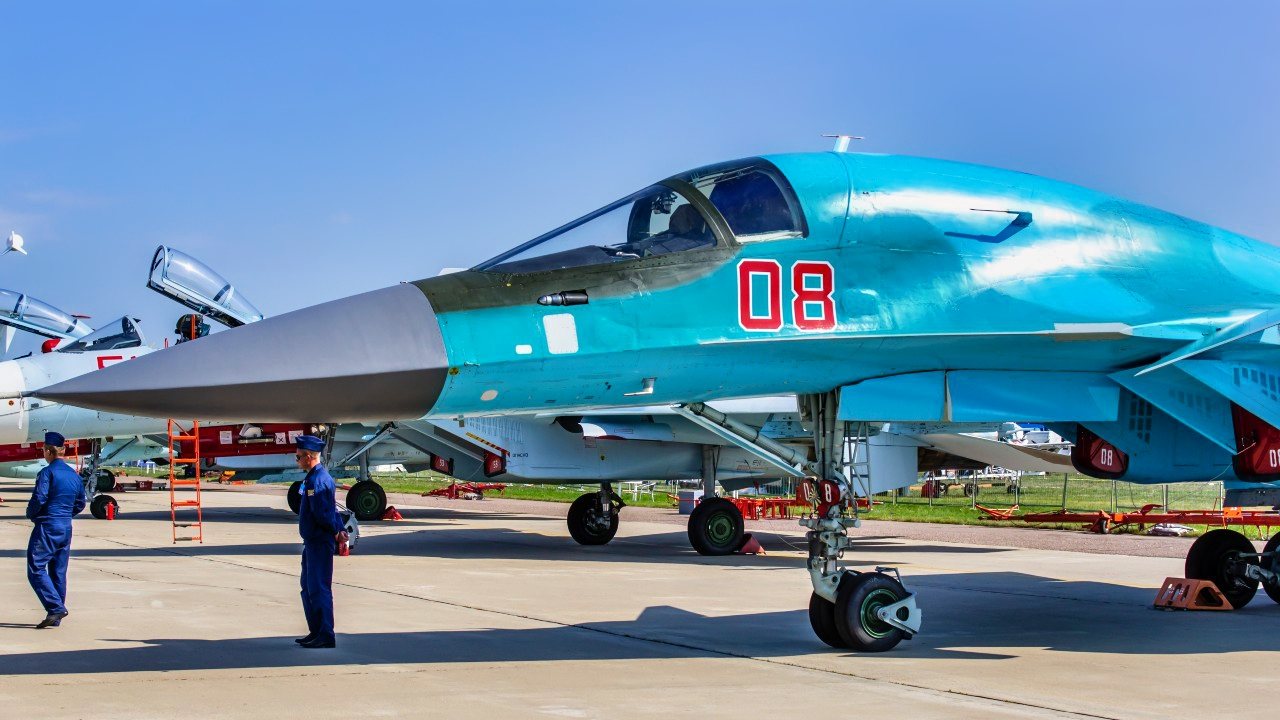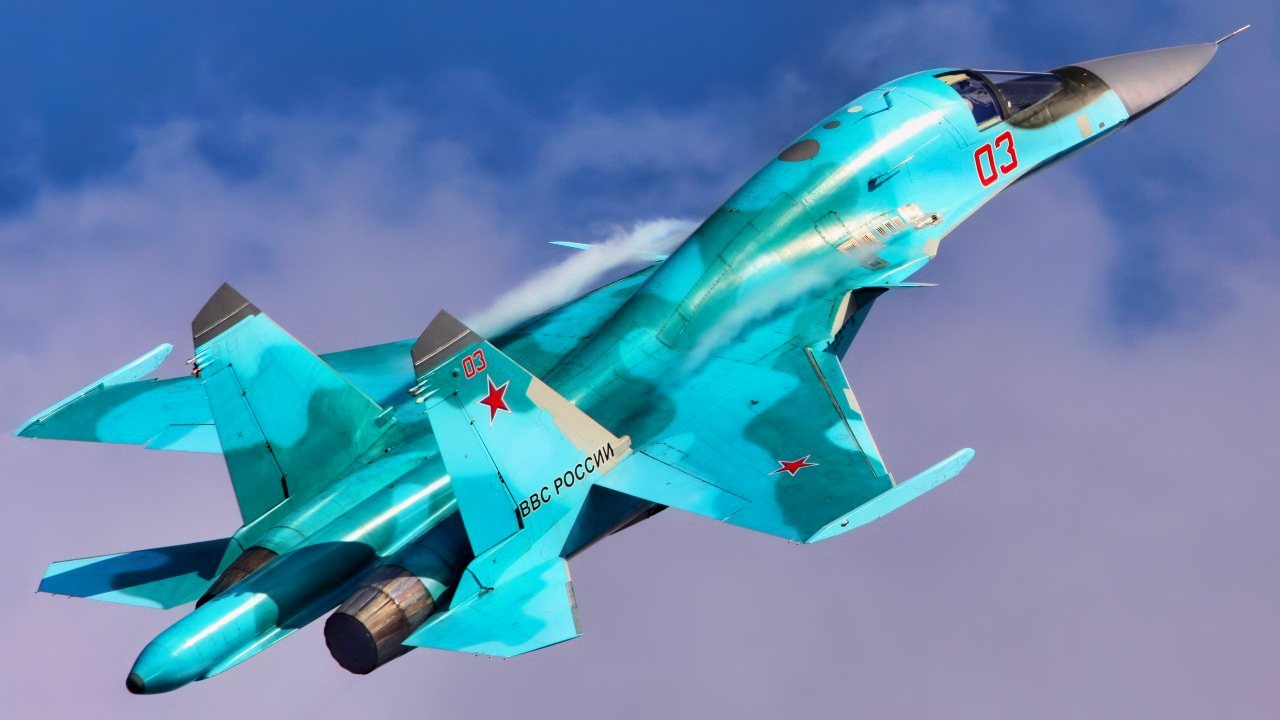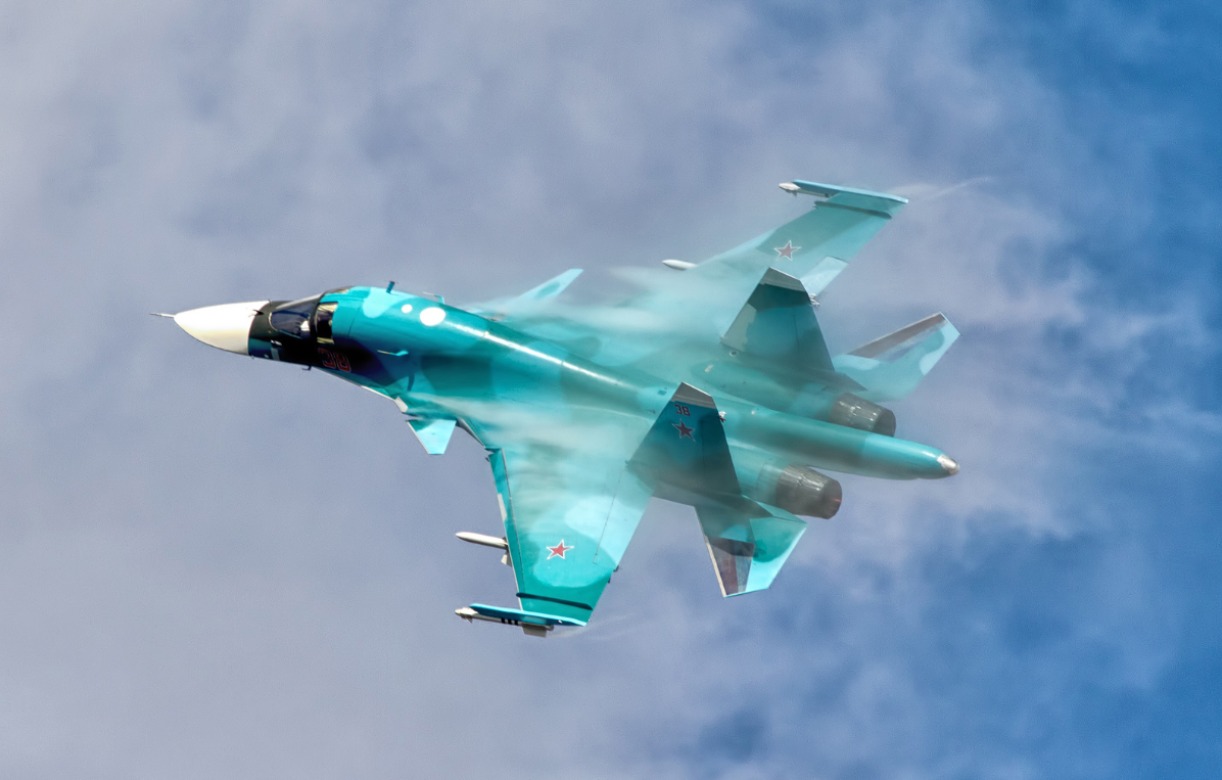Russia's Su-34 Fullback Fighter-Bomber Nightmare in Ukraine Should Shock No One
The Russian Su-34, a sophisticated warplane, has experienced increased losses over Ukraine due to its deployment closer to the frontlines, making it vulnerable to advanced Western-supplied air defenses like the NASAMS and Patriot systems.
Summary: The Russian Su-34, a sophisticated warplane, has experienced increased losses over Ukraine due to its deployment closer to the frontlines, making it vulnerable to advanced Western-supplied air defenses like the NASAMS and Patriot systems.

-Originally designed during the Soviet era, the Su-34 was fully realized and first saw major combat in the Syrian Civil War, demonstrating significant capabilities.
-In Ukraine, the strategy of flying lower to support ground troops—akin to tactics used by the US in WWII—has made these aircraft easy targets despite their advanced design and weaponry. The increased risk has led to a notable number of Su-34s being shot down, yet they remain a crucial part of Russia's military efforts in the region.
Why Russia's Su-34 Warplanes Are Falling Prey to Ukrainian Defense
The Russian Su-34 is one of Russia’s iconic warplanes flying today. Yet, this bird has been getting downed in large numbers by the Ukrainian defenses over the last year or so. The Su-34 is one of the most advanced warplanes of its time. It has enhanced air refueling capabilities, maneuverability, it can travel at supersonic speeds, and it has a long range for operations. Multiple Su-34s have been hit by Ukrainian air defenses.
Why the sudden surge in Su-34s being blasted from the sky?
Russians are Waging a War. Su-34 Fighters Will Be Shot Down
The simple answer is that they’re being deployed closer to the frontline in ways that make them more vulnerable to the air defense systems that the West has provided to Ukraine.
Just as during the Second World War, when US Army Air Corps General Curtis LeMay commanded American bombers to fly lower and slower so as to ensure that their bombs were landing over their intended targets, the Russians are taking their planes and putting them at greater risk to ensure their missions are successful.
When LeMay had American bombers fly lower than they had been, their bombs became more accurate. But this just exposed the American planes to enemy air defenses. So, the Americans destroyed more targets but more American planes were lost in the process.
That is precisely what the Russians have done in Ukraine with their Su-34s.
Certainly, air defense systems like the National Advanced Surface-to-Air Missile System (NASAMS) and the Patriot missile batteries that Ukraine has been sending to the frontlines to harry Russian air attacks are lethal systems. Lessons will be learned from the way that these air defense systems have been deployed against waves of Russian warplanes.
But a key element that is easy to overlook is that the Russians are placing their warbirds in greater danger by having them fly the kind of missions that, until recently in the war, Russian commanders were hesitant to run.
In fact, according to Oryx Blog, which has been tracking data coming from the Ukraine War, Russia has lost as many as 26 of the Su-34s in combat since the start of the war. Now, that sounds like a lot. Considering how many Su-34s the Russians have in their arsenal—as well as the fact that Russia’s President Vladimir Putin has identified the Ukraine War as an existential struggle for his armed forces—losing these systems in combat shouldn’t surprise anyone.
The fact is that the Su-34s have been highly effective in combat. They are one of the primary warplane models the Russians have deployed against Ukraine. For all the talk about the planes that have been shot down in quick succession, no one should believe that this will at all fundamentally alter the course of the war or change the Russian strategy. It won’t. The Su-34s are doing fine.
The Su-34 Specifications
Consider the design specifications of the Su-34.
This warplane has its origins in the Soviet Union. Because of the tumultuous collapse of the USSR, the warplane was put into what the Hollywood executives might call, “Development Hell.” Thus, it took years for Russian military designers to fully realize this plane. By the time this warbird was ready for deployment, the Russians were involving themselves in the Syrian Civil War. The Syrian Civil War was the first major combat that the Su-34s saw. They performed well.

So, the Putin regime in Moscow deployed them to Ukraine.
The Su-34 has a pair of Saturn AL-31FM1 turbofan engines, meaning this bird has a maximum speed of more than Mach 1.8. The Su-34 has a total range of 2,500 miles—that can be extended, thanks to its aforementioned advanced air refueling capabilities. The Su-34 can launch missiles at pursuing aircraft, too, giving it a unique self-defense feature. Its primary air-to-air missile is the R-77 missile, plus two R-73 short-range air-to-air missiles. In terms of its primary role of serving as a bomber, this bird can accommodate multiple long-range standoff weapons systems—including Oniks anti-ship missiles.
All Su-34s come with 30 mm Gsh-301 cannon that can fire 180 rounds. These birds have proven to be effective in both the Syrian Civil War and the Ukraine War, air defenses notwithstanding. Because the Russians are committed to pushing Ukraine’s forces back and punching through their lines, we can expect more Russian birds to be lost in combat because they are flying lower to the ground in support of Russian ground troops.

The Patriot and NASAMS are a major complicating factor for Russia and the Ukrainians are smart to use these systems as they are.
It will only slow the Russian advance, though. And the Su-34 is one of Russia’s primary vehicles for successfully fighting Ukraine (which they are).

About the Author
Brandon J. Weichert, a National Interest national security analyst, is a former Congressional staffer and geopolitical analyst who is a contributor at The Washington Times, the Asia Times, and The-Pipeline. He is the author of Winning Space: How America Remains a Superpower, Biohacked: China’s Race to Control Life, and The Shadow War: Iran’s Quest for Supremacy. His next book, A Disaster of Our Own Making: How the West Lost Ukraine, is due October 22 from Encounter Books. Weichert can be followed via Twitter @WeTheBrandon.


